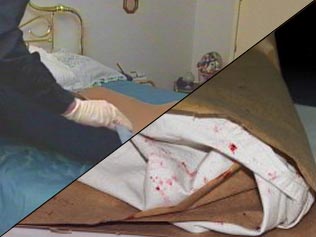Archival Notice
This is an archive page that is no longer being updated. It may contain outdated information and links may no longer function as originally intended.
Home | Glossary | Resources | Help | Contact Us | Course Map
Procedures for Collecting Sexual Assault Evidence
- If the victim was forced to perform oral sex, the victim's mouth should be swabbed. The swab should be air-dried and packaged in a labeled paper or glassine envelope.
- If the victim was licked, kissed, or sucked on any part of the body, the area should be wet/dry swabbed (wet swab moistened with distilled water) to recover residue saliva using new sterile swabs. Air-dry swabs and package them separately in labeled envelopes. Packaging should document exact locations with reference points indicating what area was swabbed.
- Seminal or vaginal stains on undergarments (victim or suspect), clothing (victim or suspect), bed sheets, and pillows should be collected as evidence
- Garments thought to contain vaginal or seminal stains should be air-dried, wrapped, and packaged in paper to prevent cross-contamination of evidence
- If clothing, garments, or bed linens must be folded for collection, place paper between each fold to prevent the inadvertent transfer of evidence
- Lubricants, such as creams, oils, and/or petroleum jellies, should be submitted in original containers
Note: It may be necessary to collect evidence from a suspect. Pubic hair combings and scrotal or penile swabbings can be evaluated for DNA evidence.
Additional Online Courses
- What Every First Responding Officer Should Know About DNA Evidence
- Collecting DNA Evidence at Property Crime Scenes
- DNA – A Prosecutor’s Practice Notebook
- Crime Scene and DNA Basics
- Laboratory Safety Programs
- DNA Amplification
- Population Genetics and Statistics
- Non-STR DNA Markers: SNPs, Y-STRs, LCN and mtDNA
- Firearms Examiner Training
- Forensic DNA Education for Law Enforcement Decisionmakers
- What Every Investigator and Evidence Technician Should Know About DNA Evidence
- Principles of Forensic DNA for Officers of the Court
- Law 101: Legal Guide for the Forensic Expert
- Laboratory Orientation and Testing of Body Fluids and Tissues
- DNA Extraction and Quantitation
- STR Data Analysis and Interpretation
- Communication Skills, Report Writing, and Courtroom Testimony
- Español for Law Enforcement
- Amplified DNA Product Separation for Forensic Analysts


